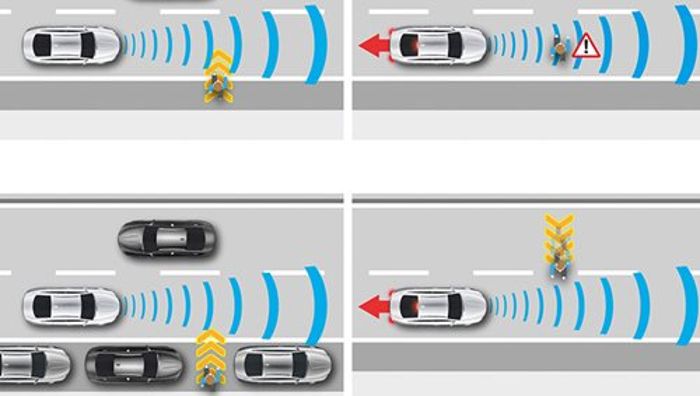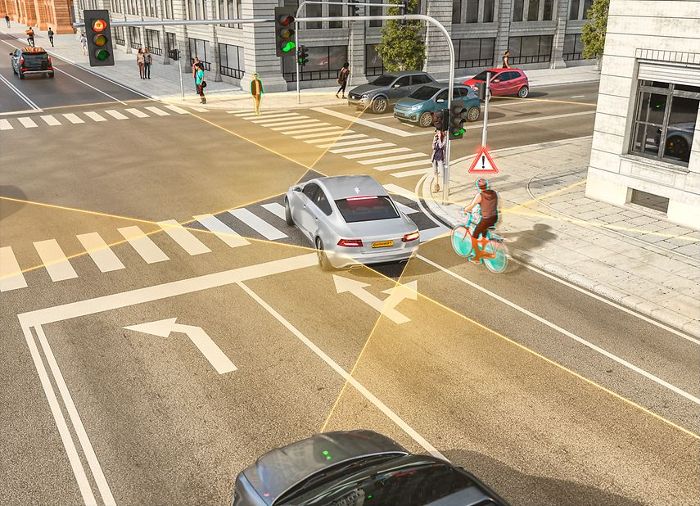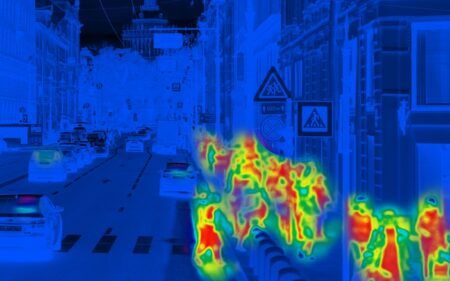In a move to help protect the most vulnerable road users, pedestrians and cyclists, German automotive technology supplier Continental has unveiled a new short-range radar that offers more precise detection of a vehicle’s surroundings.
Seen as the next stage in the development of vehicle awareness systems the new generation radar operates using 77GHz technology in place of the 24GHz waveband previously used. This means that the radar sensor detects the environment at a much higher resolution and level of accuracy than was previously the case, and is also able to detect other road users and obstacles with greater precision than the 24GHz. The integration density of the new radar has been further increased and as a result, the individual components of the system, such as the antenna and the radio-frequency (RF) chip, are now housed in a smaller installation space, rendering the sensor even more compact. This makes it easier to install the system in vehicles, even in confined spaces.
One of the new radar sensors can be positioned at each of the four corners of the body to ensure almost seamless 360-degree monitoring of the vehicle surroundings. Radar systems such as this already form the basis for various advanced driver assistance systems (ADAS) employing sensors, such as monitoring the left and right-side blind spots, detecting surroundings for the Lane Change Assist, monitoring cross-traffic and intersections for the Intersection and Emergency Brake Assist systems, as well as monitoring the area behind the vehicle to ensure that occupants can get out safely. This prevents the doors from being opened when another vehicle or a cyclist is approaching from behind.

Of particular benefit in urban traffic, the new radar sensors also support the Right-Turn Assist system that can detect a cyclist or pedestrian approaching from behind the vehicle on the right-hand side. The system intervenes if the driver wants to turn right when a cyclist is just about to pass along the side of the vehicle, and transmits an appropriate signal to the brakes and the car automatically stops a collision.
According to an analysis of Continental’s accident research, a Right-Turn Assist system for passenger cars could help prevent 5% of all accidents in which cyclists are killed or seriously injured in Germany, 7% in Japan, and 8.5% of all accidents involving cyclist fatalities in the USA, plus a further 6% of accidents in which cyclists suffer minor injuries. The installation of cornering assistance systems in trucks will be mandatory across the EU for all new vehicle types from 2020 onwards. The figures clearly show just how urgent this regulation is. In Germany alone, 36% of all accidents in which a cyclist is killed could be prevented by installing Right-Turn Assist systems in trucks.
The seamless and high-resolution monitoring of the vehicle’s surroundings offered by the new 77GHz short-range radar technology will form the basis for other ADAS features in the future, especially in relation to automated and autonomous driving. In the event of a sudden avoidance maneuver, Emergency Steer Assist knows exactly which other road users are in the vicinity, including their trajectories and speeds, and allows the vehicle to be steered away from the collision risk area.





